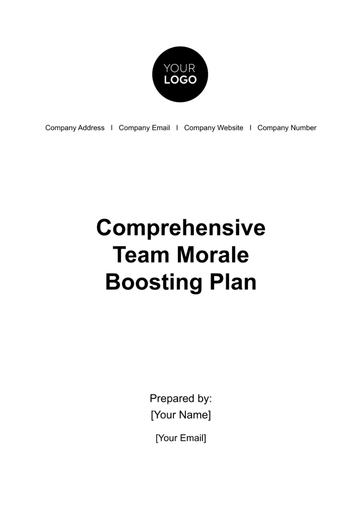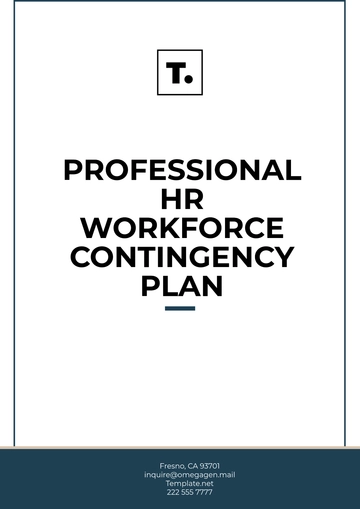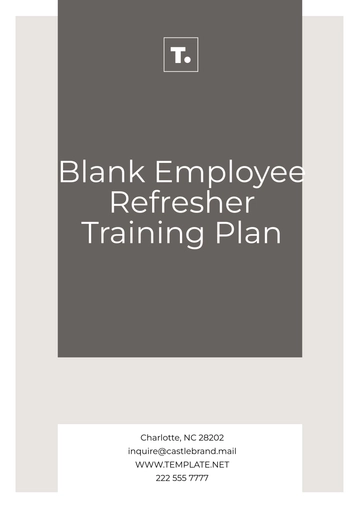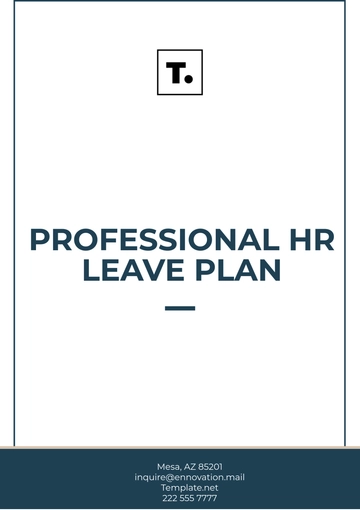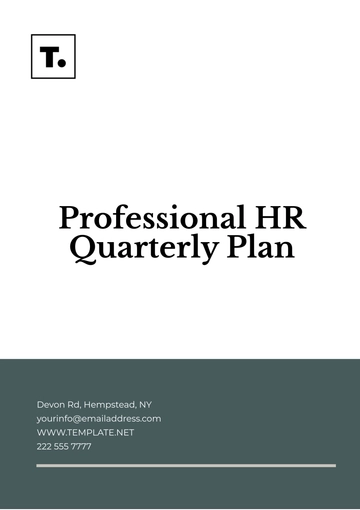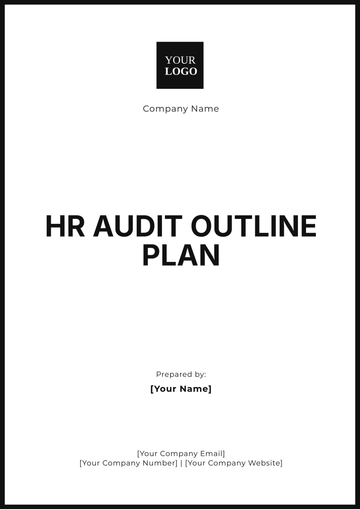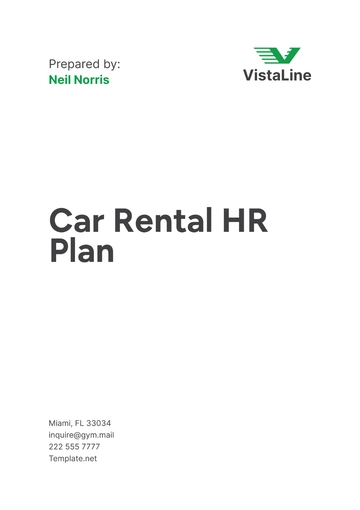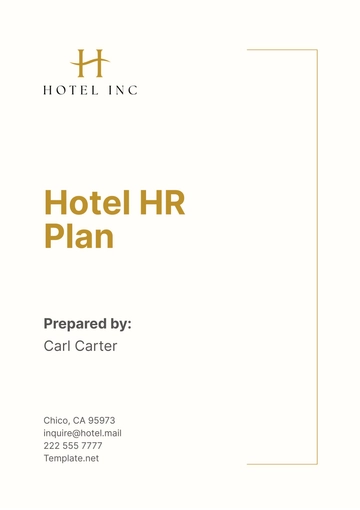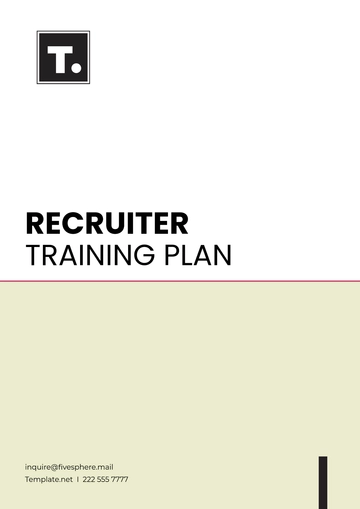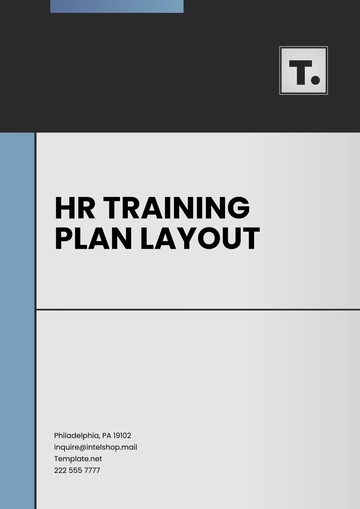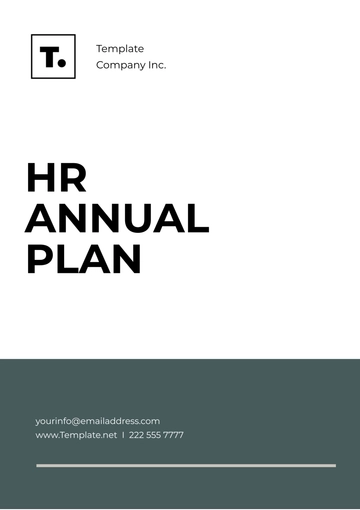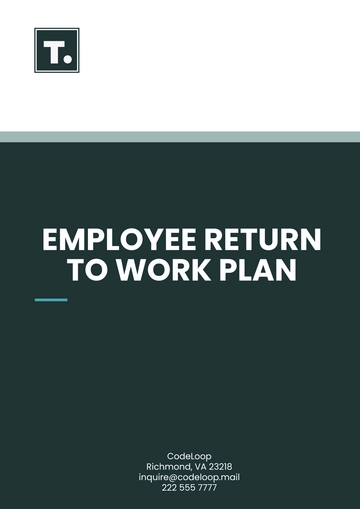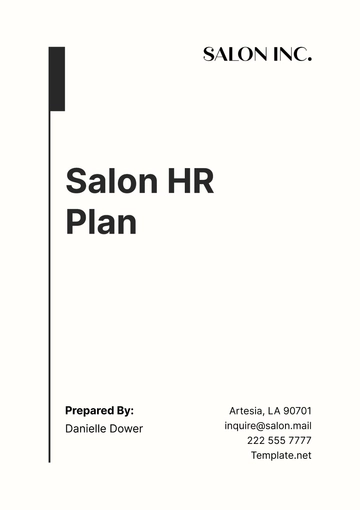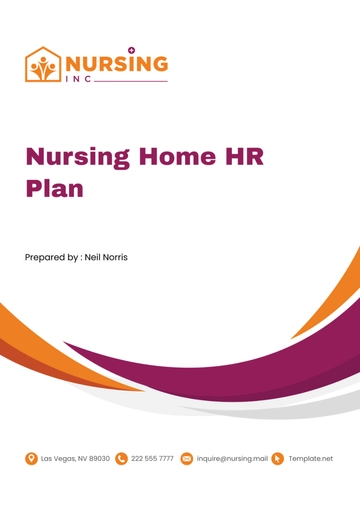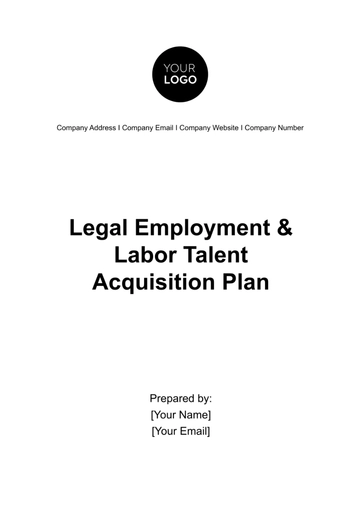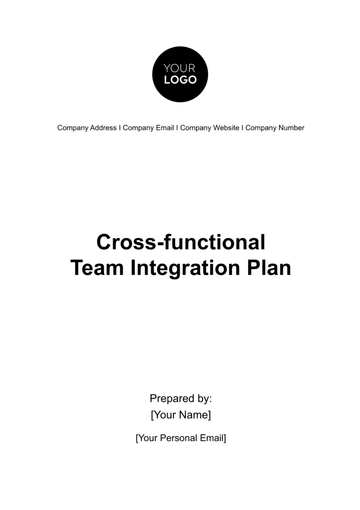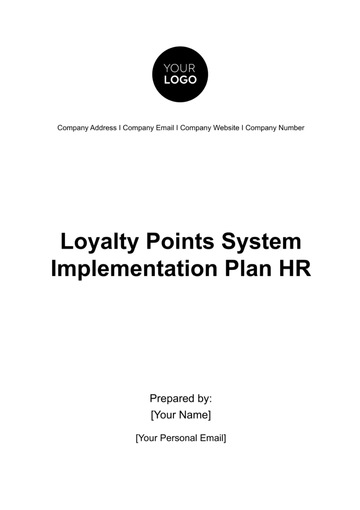Free Vehicle and Transportation Safety Plan HR
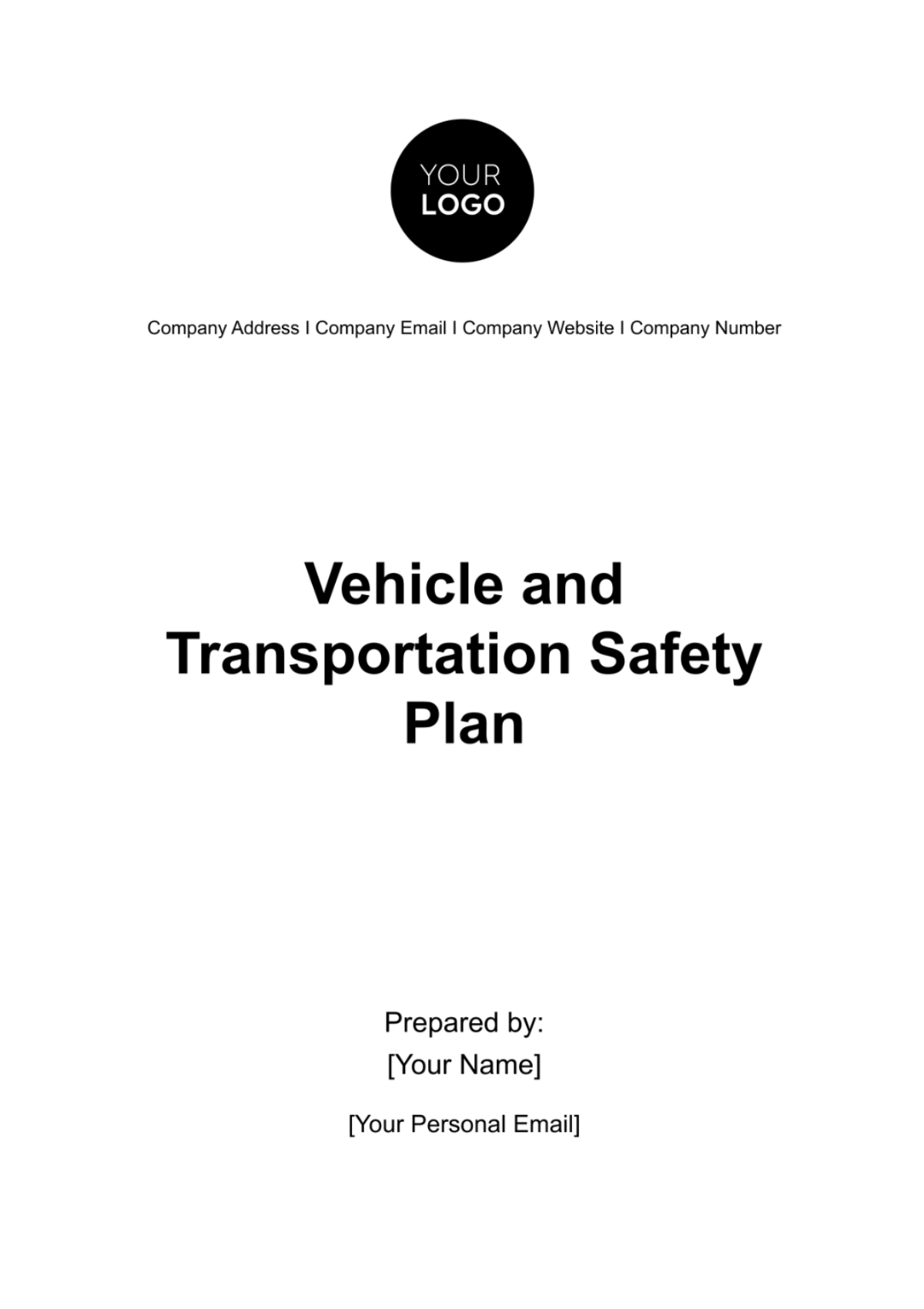
Introduction
This Vehicle and Transportation Safety Plan is designed to ensure the safety of all vehicles operated by [Company Name] and promote safe transportation practices. Safety is paramount, and this plan serves as a guideline to mitigate risks and protect the well-being of our employees, customers, and the public.
Objectives
The primary objective of this plan is to establish a culture of safety within our organization, where vehicle and transportation safety is a top priority. This plan aims to prevent accidents, injuries, and property damage associated with our transportation activities.
Responsibilities
Management: Responsible for establishing safety policies, providing resources, and promoting a culture of safety.
Drivers: Responsible for safe vehicle operation and adherence to safety policies.
Safety Officer: Responsible for monitoring compliance, conducting safety training, and overseeing incident investigations.
Maintenance Team: Responsible for vehicle inspection and maintenance.
Human Resources: Responsible for driver qualifications and training records.
Vehicle Safety
Vehicle Inspection and Maintenance
In the realm of transportation safety, the well-being of both occupants and the general public hinges upon the condition of the vehicles in operation. Therefore, the meticulous inspection and regular maintenance of vehicles represent the cornerstone of our commitment to safety.
A comprehensive inspection regimen shall be implemented to ensure that all vehicles in our fleet meet or exceed safety standards. This includes but is not limited to:
Pre-Trip Inspection: Before every journey, drivers are obligated to perform a thorough pre-trip inspection. This inspection shall encompass critical components such as brakes, tires, lights, steering, and suspension. Any identified issues must be reported promptly and addressed before the vehicle is deemed roadworthy.
Routine Maintenance: A scheduled maintenance program shall be devised for all vehicles in accordance with manufacturer recommendations and regulatory requirements. Maintenance records, including service dates and vehicle mileage, shall be meticulously documented. This ensures that timely service is conducted, reducing the risk of unexpected mechanical failures.
Safe Vehicle Operation
Safe vehicle operation is not merely a matter of adherence to traffic regulations but an active commitment to the well-being of all road users. Our organization is steadfast in its commitment to ensuring that our drivers operate vehicles safely and responsibly.
Our drivers are trained in defensive driving techniques, which include but are not limited to:
Maintaining Safe Following Distances: Drivers are educated on the importance of maintaining adequate following distances to allow for reaction time in case of sudden stops or emergencies.
Anticipating and Mitigating Hazards: Drivers shall be proactive in identifying potential hazards on the road, such as aggressive drivers, adverse weather conditions, or road construction. They shall employ defensive strategies to mitigate risks.
Adherence to Speed Limits: Our organization's policy mandates strict adherence to posted speed limits, recognizing that excessive speed is a leading contributor to accidents.
Driver Safety
Driver Training and Qualifications
Ensuring the safety of our drivers and all road users is of paramount importance. It begins with comprehensive training and stringent qualifications to ensure that those entrusted with operating our vehicles possess the knowledge, skills, and attitudes necessary for responsible and safe driving.
Our organization maintains rigorous standards for driver qualifications, including but not limited to:
Valid Driver's License: All drivers must possess a valid and appropriate driver's license for the type of vehicle they operate. Regular checks of license validity will be conducted.
Medical Certification: Drivers operating vehicles that require specific medical certifications, such as commercial driver's licenses (CDL), shall provide valid medical certificates, ensuring they are physically fit to drive.
Criminal Background Checks: Comprehensive background checks are performed on all prospective drivers to assess their suitability and ensure the safety and security of our operations.
Driver Training and Qualifications
Defensive driving is the cornerstone of safe vehicle operation. It involves proactive strategies and behaviors aimed at reducing the risk of accidents and ensuring the safety of all road users.
Our drivers adhere to the following defensive driving principles:
Maintaining Safe Following Distances: Drivers are trained to maintain a safe following distance behind the vehicle in front of them, allowing ample time to react to sudden stops or emergencies.
Anticipating and Mitigating Hazards: Drivers are taught to anticipate potential hazards on the road, such as aggressive drivers, adverse weather conditions, or road construction. They are encouraged to employ defensive strategies to mitigate these risks.
Speed Management: Our organization strictly enforces speed limits and encourages drivers to adapt their speed to road conditions, respecting posted limits.
Avoidance of Distractions: Distracted driving poses a significant risk. Our drivers are prohibited from using mobile devices, engaging in distracting conversations, or any activities that divert their attention from the road.
Emergency Response
Accidents, though unwelcome, are an unfortunate reality in the world of transportation. However, our organization is firmly committed to responding swiftly, comprehensively, and responsibly when accidents occur. This section outlines our protocols for accident reporting and investigation.
Accident Reporting and Investigation
Safety First: In the event of an accident, the safety and well-being of all involved parties take precedence. Our drivers are trained to assess the situation and ensure that immediate medical attention is sought for anyone injured.
Securing the Scene: Drivers are instructed to move the vehicle to a safe location if possible and use hazard warning lights to alert other road users.
Detailed Reporting: After an accident, drivers are expected to provide a detailed report of the incident to our organization. This report should include information such as the date, time, location, weather conditions, and a description of events leading up to the accident.
Photographic Evidence: Drivers are encouraged to take photographs of the accident scene, vehicle damage, and any relevant road conditions.
Witness Statements: If witnesses are present, drivers are advised to gather their contact information and statements.
Emergency Contact Information
In the event of an emergency, quick access to essential contact information is critical. Our organization maintains a comprehensive emergency contact information system to ensure swift and effective response when needed.
Personal Emergency Contacts: All employees are required to provide up-to-date personal emergency contact information to our HR department. This information is kept confidential but is accessible to authorized personnel in case of an emergency involving the employee.
Next of Kin: Employees are encouraged to provide information for their next of kin or designated emergency contact person. This information is only accessed in emergencies or when an employee is unable to communicate.
Emergency Roadside Assistance: Our organization maintains contracts with emergency roadside assistance providers. Drivers are equipped with contact information for these services and are instructed to call for assistance in case of vehicle breakdowns, accidents, or other roadside emergencies.
Internal Emergency Response Teams: Designated employees within the organization are trained to respond to various emergency situations, such as accidents, medical emergencies, or natural disasters. Their contact information is readily available to all employees.
Safety Policies and Procedures
At [Company Name], the safety and well-being of our employees and the public are of paramount importance. To maintain the highest standards of safety, we have established comprehensive policies and procedures that govern various aspects of safety, including alcohol and drug use as well as the use of cell phones and distractions while on duty.
[Company Name] maintains a strict zero-tolerance policy regarding the use of alcohol or illegal drugs while on duty or when operating company vehicles. This policy applies to all employees, contractors, and volunteers.
As part of the hiring process, all prospective employees are subject to pre-employment drug and alcohol screening. Refusal to submit to screening or a positive test result may result in the withdrawal of a job offer.
Random drug and alcohol testing is conducted for employees on a regular basis. Any employee who tests positive will be subject to disciplinary action, up to and including termination.
All employees have a responsibility to report any concerns regarding alcohol or drug use by fellow employees. Reports may be made anonymously through a designated reporting mechanism.
[Company Name] is committed to helping employees overcome substance abuse issues. Employees who voluntarily seek assistance before a violation occurs may be eligible for rehabilitation programs and support.
Violations of the alcohol and drug policies may result in disciplinary actions, including written warnings, suspension, or termination, depending on the severity of the violation and any prior incidents.
Route Planning and Risk Assessment
Efficient and safe transportation operations rely heavily on strategic route planning and a thorough assessment of potential risks. This section outlines our organization's approach to these critical aspects of our operations.
Our organization utilizes advanced GPS and mapping tools to plan and optimize routes for all transportation activities. These tools help identify the shortest, safest, and most fuel-efficient routes.
Route planning prioritizes safety above all else. Routes are selected to minimize exposure to high-risk areas, such as regions with high crime rates or hazardous road conditions.
Our route planning process includes real-time traffic analysis. This helps drivers avoid congestion and delays, reducing the likelihood of accidents caused by rushed driving or frustration.
Clear communication between dispatchers and drivers is essential. Drivers receive detailed route instructions before embarking on each journey, including potential detours, road closures, or alternative routes in case of unexpected events.
While safety remains paramount, we also consider customer requirements, such as delivery time windows. Our route planning aims to meet customer expectations while ensuring safe and efficient transportation.
Weather and Environmental Considerations
Weather conditions can greatly affect transportation safety. Our organization closely monitors weather forecasts for the areas through which our vehicles will travel. This includes information on rain, snow, ice, fog, wind, and extreme temperatures.
Prior to commencing a journey, drivers are instructed to assess road conditions. If adverse weather is anticipated, they should check the condition of tires, brakes, and other critical vehicle components.
In the event of severe weather conditions that pose a safety risk, drivers are instructed to divert to a safe location or, if necessary, to halt their journey until conditions improve.
Our organization prepares drivers for potential environmental hazards, such as flooding or wildfires, that may affect route safety. Drivers are trained to follow evacuation or alternative route procedures as needed.
Vehicles are equipped with emergency kits containing essentials like blankets, food, water, flashlights, and first-aid supplies. These kits are designed to support drivers and passengers in the event of extended delays due to weather-related issues.
To mitigate the impact of adverse weather, drivers are provided with information on alternative routes that may be safer in specific conditions. These routes are pre-planned and communicated in advance.
Security
Security is a cornerstone of our operations, as we recognize its critical importance in safeguarding our assets, ensuring the safety of our personnel, and maintaining the trust of our clients and partners. This section outlines our comprehensive approach to security, covering both Vehicle Security Measures and Cargo Security.
Vehicle Security Measures
All vehicles in our fleet are equipped with advanced keyless entry and ignition systems. These systems provide enhanced security by preventing unauthorized access to vehicles.
We employ cutting-edge GPS tracking technology to monitor the real-time location and movement of our vehicles. This technology enables us to track vehicle whereabouts, respond rapidly to incidents, and optimize routes for efficiency.
Each vehicle is outfitted with state-of-the-art alarm systems. These alarms serve both as deterrents to potential thieves and as immediate alerts to our security personnel in the event of unauthorized entry or tampering.
Our vehicles are stored in secure parking facilities during periods of inactivity. These facilities are equipped with robust access control measures, surveillance cameras, and regular security patrols to ensure the safety of our assets.
Regular inspections of our vehicles are conducted to identify any signs of tampering, damage, or security breaches. These inspections are meticulously documented, allowing us to take preventive actions to safeguard against security incidents.
Cargo Security
Our organization places the utmost importance on secure loading and unloading procedures. Cargo is thoroughly inspected, loaded in a secure manner, and adequately secured to prevent shifting during transportation.
We employ advanced cargo tracking systems that monitor the status and location of cargo throughout the transportation process. This technology enables us to promptly detect any irregularities or potential security threats.
Cargo containers are equipped with high-security locks and tamper-evident seals to provide an added layer of protection. Drivers are responsible for regularly inspecting and verifying the integrity of these locks and seals at each stop.
Access to cargo areas is strictly restricted to authorized personnel only. Our drivers are trained to ensure that no unauthorized individuals gain access to cargo during transportation.
In the event of a security breach or cargo theft, we have established clear emergency response procedures. Our drivers are trained to promptly contact the appropriate authorities and our security team, initiating a swift response and investigation.
All personnel involved in the transportation and handling of cargo receive comprehensive security training. This training encompasses the identification of suspicious activity, reporting procedures, and adherence to security protocols.
We maintain strong collaborative relationships with local law enforcement agencies. This partnership facilitates rapid response and investigative support in the event of cargo theft or security incidents.
Regulatory Compliance
At [Company Name], we are committed to upholding the highest standards of regulatory compliance. Our dedication to adhering to local, state, and federal laws is not only a legal obligation but a fundamental principle that guides our operations. This section outlines our approach to regulatory compliance, covering both Compliance with Local and Federal Laws and Documentation and Record Keeping.
Compliance with Local and Federal Laws
We diligently study and stay informed about all local, state, and federal laws and regulations that pertain to our industry. This includes transportation laws, safety regulations, environmental requirements, and more.
Our organization maintains open lines of communication with relevant regulatory authorities. We actively engage with regulatory agencies to ensure that our operations consistently align with evolving legal standards and requirements.
We retain legal counsel with expertise in our industry to provide ongoing guidance, interpretation of regulations, and assistance in compliance matters. Legal counsel is consulted whenever significant changes in regulations occur.
All employees receive training on relevant local, state, and federal laws and regulations that pertain to their roles. This training includes both initial orientation and ongoing education to ensure that our workforce remains informed and compliant.
Periodic internal audits and assessments are conducted to evaluate our compliance with local and federal laws. Findings from these audits are addressed promptly, and corrective actions are implemented as necessary.
Documentation and Record-Keeping
We maintain a comprehensive records retention policy that outlines the types of records to be retained, retention periods, and methods for secure storage and disposal.
Detailed procedures are established for the creation, storage, retrieval, and disposal of records. These procedures ensure consistency and compliance with record-keeping requirements.
We utilize secure digital record management systems to organize and store records electronically. This includes digital copies of permits, licenses, safety reports, employee records, and compliance-related documents.
Robust backup and recovery systems are in place to safeguard against data loss. Regular backups of critical compliance records are performed and stored securely to ensure accessibility and integrity.
Compliance records are subject to periodic review to ensure accuracy, completeness, and compliance with regulatory requirements. Any discrepancies or missing records are addressed promptly.
Our record-keeping systems are designed for efficient retrieval of documents when needed. Authorized personnel have access to necessary records, and retrieval is facilitated through secure and organized digital systems.
Conclusion
In the dynamic and complex world of transportation and logistics, the pursuit of excellence in safety, security, and compliance stands at the heart of our organization's mission. As we conclude this comprehensive document outlining our Vehicle and Transportation Safety Plan, it is imperative to reflect on the principles, commitments, and responsibilities that underpin our operations.
Safety, as we have emphasized throughout this plan, is not just a regulatory requirement but a moral obligation. Our unwavering dedication to vehicle safety, driver safety, and emergency response measures is a testament to our commitment to protecting lives, assets, and the well-being of the public.
Security, both in terms of vehicle security measures and cargo security, represents our commitment to safeguarding our assets and fulfilling our promises to clients. It is a reflection of our dedication to reliability and trustworthiness, ensuring that our clients can have confidence in our services.
Regulatory compliance is the cornerstone upon which our organization is built. We recognize that compliance is not just about meeting legal obligations but about upholding the highest standards of ethics and responsibility. We pledge to operate within the bounds of the law and to engage with regulatory authorities transparently and collaboratively.
Documentation and record-keeping are the pillars that support our commitment to compliance and accountability. By meticulously maintaining records and adhering to a structured documentation system, we ensure transparency, traceability, and the ability to demonstrate our adherence to regulatory standards.
We extend our gratitude to all employees, partners, and clients who share in our commitment to safety, security, and compliance. Together, we forge a future where transportation is synonymous with responsibility, reliability, and trustworthiness.
- 100% Customizable, free editor
- Access 1 Million+ Templates, photo’s & graphics
- Download or share as a template
- Click and replace photos, graphics, text, backgrounds
- Resize, crop, AI write & more
- Access advanced editor
Unveil the Vehicle and Transportation Safety Plan HR Template at Template.net, an essential tool for managing transportation-related safety in your organization. This template is fully editable and customizable, allowing HR professionals to tailor it to specific company needs. Modify it seamlessly with our AI Editor tool, ensuring a comprehensive and effective approach to vehicle and transportation safety.
You may also like
- Finance Plan
- Construction Plan
- Sales Plan
- Development Plan
- Career Plan
- Budget Plan
- HR Plan
- Education Plan
- Transition Plan
- Work Plan
- Training Plan
- Communication Plan
- Operation Plan
- Health And Safety Plan
- Strategy Plan
- Professional Development Plan
- Advertising Plan
- Risk Management Plan
- Restaurant Plan
- School Plan
- Nursing Home Patient Care Plan
- Nursing Care Plan
- Plan Event
- Startup Plan
- Social Media Plan
- Staffing Plan
- Annual Plan
- Content Plan
- Payment Plan
- Implementation Plan
- Hotel Plan
- Workout Plan
- Accounting Plan
- Campaign Plan
- Essay Plan
- 30 60 90 Day Plan
- Research Plan
- Recruitment Plan
- 90 Day Plan
- Quarterly Plan
- Emergency Plan
- 5 Year Plan
- Gym Plan
- Personal Plan
- IT and Software Plan
- Treatment Plan
- Real Estate Plan
- Law Firm Plan
- Healthcare Plan
- Improvement Plan
- Media Plan
- 5 Year Business Plan
- Learning Plan
- Marketing Campaign Plan
- Travel Agency Plan
- Cleaning Services Plan
- Interior Design Plan
- Performance Plan
- PR Plan
- Birth Plan
- Life Plan
- SEO Plan
- Disaster Recovery Plan
- Continuity Plan
- Launch Plan
- Legal Plan
- Behavior Plan
- Performance Improvement Plan
- Salon Plan
- Security Plan
- Security Management Plan
- Employee Development Plan
- Quality Plan
- Service Improvement Plan
- Growth Plan
- Incident Response Plan
- Basketball Plan
- Emergency Action Plan
- Product Launch Plan
- Spa Plan
- Employee Training Plan
- Data Analysis Plan
- Employee Action Plan
- Territory Plan
- Audit Plan
- Classroom Plan
- Activity Plan
- Parenting Plan
- Care Plan
- Project Execution Plan
- Exercise Plan
- Internship Plan
- Software Development Plan
- Continuous Improvement Plan
- Leave Plan
- 90 Day Sales Plan
- Advertising Agency Plan
- Employee Transition Plan
- Smart Action Plan
- Workplace Safety Plan
- Behavior Change Plan
- Contingency Plan
- Continuity of Operations Plan
- Health Plan
- Quality Control Plan
- Self Plan
- Sports Development Plan
- Change Management Plan
- Ecommerce Plan
- Personal Financial Plan
- Process Improvement Plan
- 30-60-90 Day Sales Plan
- Crisis Management Plan
- Engagement Plan
- Execution Plan
- Pandemic Plan
- Quality Assurance Plan
- Service Continuity Plan
- Agile Project Plan
- Fundraising Plan
- Job Transition Plan
- Asset Maintenance Plan
- Maintenance Plan
- Software Test Plan
- Staff Training and Development Plan
- 3 Year Plan
- Brand Activation Plan
- Release Plan
- Resource Plan
- Risk Mitigation Plan
- Teacher Plan
- 30 60 90 Day Plan for New Manager
- Food Safety Plan
- Food Truck Plan
- Hiring Plan
- Quality Management Plan
- Wellness Plan
- Behavior Intervention Plan
- Bonus Plan
- Investment Plan
- Maternity Leave Plan
- Pandemic Response Plan
- Succession Planning
- Coaching Plan
- Configuration Management Plan
- Remote Work Plan
- Self Care Plan
- Teaching Plan
- 100-Day Plan
- HACCP Plan
- Student Plan
- Sustainability Plan
- 30 60 90 Day Plan for Interview
- Access Plan
- Site Specific Safety Plan

